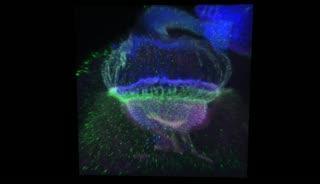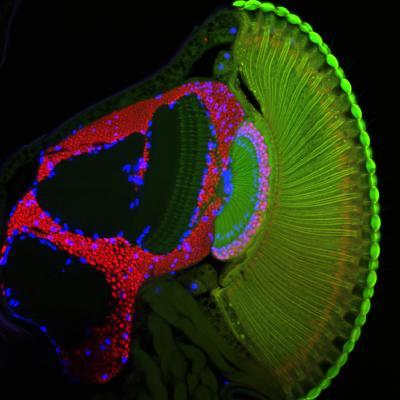The scientists now report in the scientific journal Nature Neuroscience that the visual system of the fruit fly is only able to develop correctly, when two genes work together – the genes, that are in charge of producing the proteins "Golden Goal" and "Flamingo". These two proteins are located at the tip of a growing axon, where they are believed to gather information about their environment from the surrounding tissue. The actions of these two proteins enable nerve cells in a number of ways to find their way in the brain and recognize their target area. The study showed that chaos results if only one of the genes is active, or if there is a mismatch in the genes' activity: the axons cease to grow somewhere along the way and never reach their target area.
"We assume that very similar mechanisms play a role also in other organisms – including humans", explains Takashi Suzuki, lead author of the study. "We are now a good way into understanding how to manipulate the cells in such a way that they are certain to reach their target area." This knowledge would be an important foundation for eventual therapies of developmental disorders based upon a misguided growth of nerve cells. The knowledge may also help in the guidance of regenerating nerve cells back to their old connection sites.

This is a 3D-rotation through the optic lobe of a fly larva's brain. Blue are axons of the photoreceptor nerve cells, the two guidance proteins are shown in green (GoGo) and magenta (Flamingo).
(Photo Credit: Max Planck Institute of Neurobiology / Suzuki)

The photoreceptor nerve cells (green) of the fly's compound eye send their axons to the brain's optic ganglia. Scientists have now discovered that the axons are able to recognize their target area in the brain thanks to the interaction of two genes.
(Photo Credit: Max Planck Institute of Neurobiology / Suzuki)
Source: Max-Planck-Gesellschaft